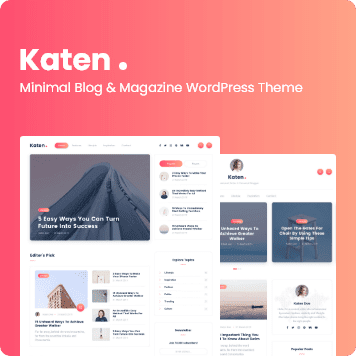If you’ve been thinking about freelancing but feel stuck because you “have no experience” — this post is for you.
The truth is, freelancing in 2025 is more beginner-friendly than ever. You don’t need a fancy degree, a big network, or even past clients to get started. All you need is internet access, a willingness to learn, and a few smart steps.
Let’s walk through exactly how you can start freelancing — even if you’re starting from scratch.
Why Freelancing Is a Great Option in 2025
Freelancing has exploded in 2025 — and it’s not slowing down.
- Companies now expect to hire remote freelancers.
- You can work from anywhere (even your couch).
- You choose your hours, your rates, and the type of work you do.
- AI tools make tasks faster and easier — great for beginners.
Even better? You don’t need years of experience to land your first job. Many clients just want someone reliable, eager, and easy to work with.
Common Fears When Starting Without Experience
Starting anything new can feel scary. It’s normal to think:
- “Why would anyone hire me?”
- “I don’t have any past work to show.”
- “I don’t know where to begin.”
Here’s the good news: Every successful freelancer once had zero clients. Everyone starts somewhere — and you can too.
Let’s break it down step by step.
Step 1: Identify Your Skills
Use What You Already Know
Start by asking yourself:
- What do people come to me for help with?
- What school or hobby skills do I already have?
- What do I enjoy doing on a computer or phone?
Chances are, you already have something useful — even if it doesn’t feel “professional” yet.
Choose a Freelance Skill
Here are beginner-friendly skills people pay for:
- Writing – blog posts, product descriptions, newsletters
- Graphic Design – social media posts, logos, flyers
- Video Editing – TikTok clips, YouTube intros
- Social Media Management – posting content, replying to DMs
- Translation – if you speak more than one language
- Virtual Assistant – helping businesses with small tasks
Pick one and focus — you can always add more later.
Learn for Free Online
You don’t need to pay to learn. Start with:
- YouTube – tutorials on anything
- Coursera – free courses from real universities
- Google Digital Garage – free marketing & business lessons
- HubSpot Academy – great for social media and writing
Step 2: Build a Simple Portfolio
You don’t need real clients to create a portfolio.
What to Put in Your Beginner Portfolio
- A short “About Me” section
- 2–3 sample projects that show your skills
- A way for people to contact you
That’s it. Simple is fine.
How to Create Sample Work (Without Clients)
Let’s say you’re a beginner writer. Make up:
- A blog post about a topic you like
- A product description for something on Amazon
- A short email newsletter for a pretend business
Do the same for design, editing, or any other skill — just make your best guess at what a client might want.
Use Free Tools to Build It
- Canva – for design samples and portfolio graphics
- Notion – clean and free portfolio pages
- WordPress – free blog or site builder
- Google Drive – organize your files and share links easily
Step 3: Create Your Freelance Profiles
Now it’s time to go public.
Best Platforms for Beginners
Make a profile on one or two to start. Don’t try them all at once — focus your energy.
How to Write a Killer Bio and Gig Description
Bio Tips:
- Keep it friendly and clear
- Talk about how you can help the client
- Example: “Hi! I’m Sarah, a beginner social media designer who loves helping small businesses stand out online. I create eye-catching posts using Canva — fast and friendly service always included!”
Gig Tips:
- Focus on one clear service per gig
- Use keywords clients might search for
- Add images or samples to make it more appealing
Add Credibility with Reviews (Even as a Beginner)
If no one’s hired you yet, offer a free or low-cost service in exchange for an honest testimonial. This builds trust fast.
Step 4: Get Your First Clients
Now the real magic happens: real people paying you for your work.
Offer Free or Discounted Work for Testimonials
This is a great short-term strategy. Help a few people for free (or cheap), and ask for:
- A review
- Permission to show the work in your portfolio
Ask Friends or Local Businesses
Reach out to:
- Small shops in your area
- Family or friends who own businesses
- People in Facebook groups or Discord communities
Say something like:
“Hi! I’m learning graphic design and would love to create a free logo or flyer in exchange for a review I can use on my portfolio. Interested?”
Apply to Small Jobs Daily
Look for beginner-friendly gigs and send a short, personal message. Mention:
- What you can do for them
- Why you’re excited about their project
- That you’re just getting started, so your rates are low
Keep it honest and helpful.
Step 5: Stay Consistent and Keep Learning
Freelancing is a marathon, not a race.
Rejection Is Normal
Not hearing back doesn’t mean you’re bad. It just means you’re one step closer to someone who will say yes.
Build Your Skill and Client Base Slowly
- Keep learning a little every week
- Improve your samples as your skills grow
- Raise your prices as you gain experience
Celebrate Small Wins
- Sent your first gig offer? That’s a win.
- Got your first testimonial? Huge!
- Improved your portfolio? You’re leveling up.
Final Thoughts: You Can Do This ❤️
Starting with no experience is exactly how most freelancers begin. You don’t need to be perfect — just curious, willing, and consistent.
Take one small step today. Then take another tomorrow.
💡 Ready to begin your freelancing journey?
Bookmark FreelanceShop.org for more step-by-step beginner guides, or check out our list of Top 10 Freelance Skills to Learn in 2025 next!





Leave a Reply